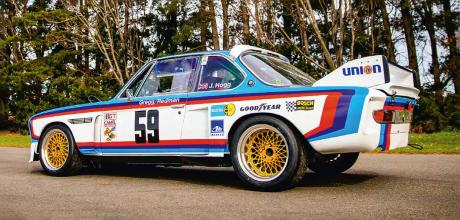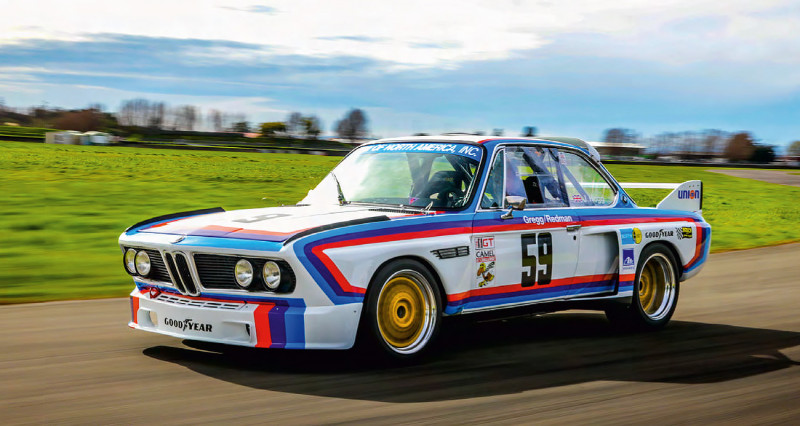M88-engined 290whp 1971 BMW 3.0 CSL E9 (1976 Daytona winner CSL Tribute Car)
BMW CSL E9 tribute the mighty Batmobile. BMW’s gorgeous lightweight racing coupés brought grace and power together in the most exotic form of modified saloon car racing, Group 5. Jonathon Hogg brings those glory days back to the track in a thoroughly worked tribute car.
Words and photography by Aaron Mai
BORN AGAIN BATMOBILE
1971 BMW 3.0 CSL E9 (1976 Daytona Winner CSL Tribute Car)
The Group 5 class of saloon car racing gave birth to legends, including one of the most iconic cars in endurance racing: the BMW 3.0 CSL E9, better known as ‘The Batmobile’.
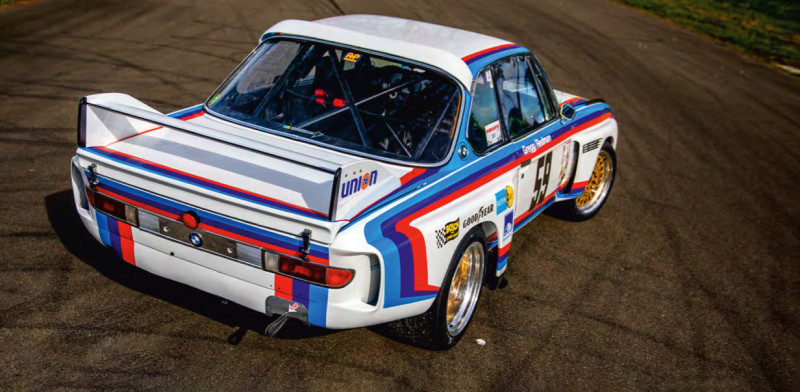
Nevertheless, the overwhelming interest in the car shows that Jonathan’s approach is very much justified
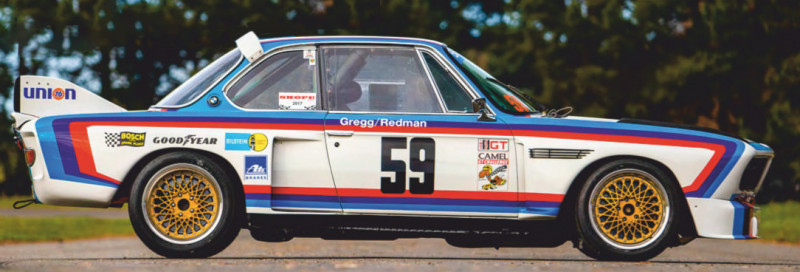
It was the magazines crammed full of photos of the Cologne Capris doing battle with the E9 3.0 CSL BMWs and Porsches that fired his imagination
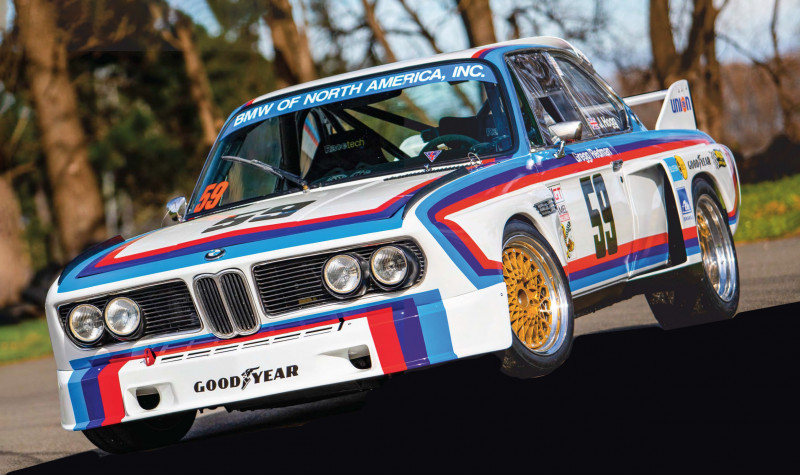
It wasn’t quite the turnkey deal that he had been hoping for — but who doesn’t love a good project?
Jonathan Hogg was a teenager growing up in England in the ’70s when the Group 5 legends were torturing the tarmac of European race circuits. Without regular TV coverage it was the magazines crammed full of photos of the Cologne Capris doing battle with the E9 3.0 CSL BMWs and Porsches that fired his imagination. While memories typically fade, the Group 5 Special Production Cars category, which ran from 1976 to 1982, remained vividly etched in his mind and ultimately resulted in the beautiful tribute car you see before you.
DAYDREAMING
Jonathan’s first face-to-face meeting with this CSL occurred in 2010 at the Hampton Down BMW Festival, where the car was sitting under a ‘for sale’ sign. The asking price was appropriately spicy, placing it beyond his means at the time but, completely for free, it sparked up his memories and refuelled his daydreaming neurons. At the time, Jonathan was building a Saker but, after completing the build and getting it out on track, it proved to be more car than he wanted to drive.

After deciding to move the Saker on, the mental pictures of the classic shapes, sounds, and blood-pumping excitement of the old Group 5 era loomed even larger. One night, while browsing cars for sale on the internet, Jonathan spotted the CSL again, but in different condition. The car was listed for sale as a rolling shell. The spicy price had shed a few points on the Scoville scale, so Jonathan headed to Auckland to have another look at the car.
Tim is something of a perfectionist but he and Jonathan share the view that if something is worth doing, it is worth doing it right
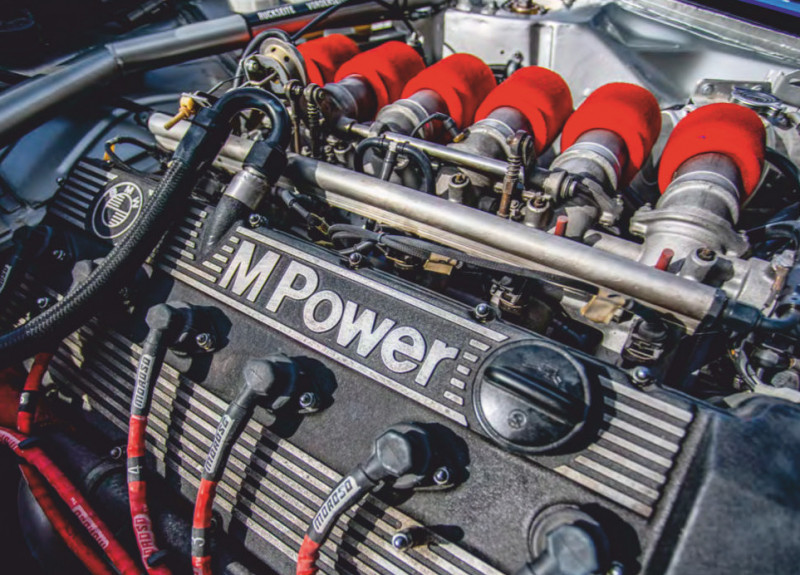
Still very much liking what he saw, Jonathan formulated a plan and negotiated its delivery as a driveable car. Despite not having an engine, brakes, gearbox, or comprehensive electrics at the time, the owner knew where the missing pieces were — in Pukekohe and Invercargill — so a deal was struck and a deposit was paid. The CSL was now off the market and headed for Palmerston North.
DEEP DIVE
The delivery date was set five months hence, but delays meant that it was a full 12 months later that the car arrived in the agreed driveable state. Jonathan was excited to get it out on track. The BMW drove and ran but in so many ways it was less than ideal. The fuel system tended to block up; the wheel spacers were too big; and after realising there was a handful of issues up front, Jonathan pulled the engine out and, to his dismay, found a bit of damage. It wasn’t quite the turnkey deal that he had been hoping for — but who doesn’t love a good project?
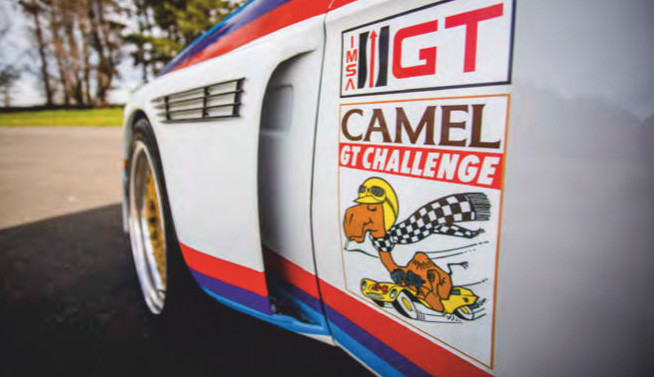
After another year of sourcing parts from Germany and working away on the engine, the M88/3 power plant was in a much healthier state. Jonathan opted to keep the internals stock except for a set of Shrick fast-road camshafts and followers, installing a twin timing-chain conversion as insurance, and adding a high-volume oil pump. The beautiful intake set-up with its individual throttle bodies and sock filters remained factory standard. To keep the CSL running reliably in its sweet spot, the car was equipped with a Link FuryX engine control unit (ECU), neatly tucked out of sight up and under the period-correct dash. To keep the internals cool, a custom radiator set-up, oil cooler, and powersteering cooler allowed Jonathan to concentrate more on the track than on the temperature gauge when driving with full intent. On the transmission side, Jonathan opted for a Getrag 256/5 dogleg box to shift gears, paired with a Quarter Master 7.-inch twinplate clutch.
SORTED
The hard work was starting to pay off, and to maximise the glorious straight-six intake and exhaust notes that the BMWs are famous for, a custom set of 2.5-inch headers feeding into a twinsystem side-exit exhaust was fabricated by Llama Engineering. It was time to get the car back out on track, although it took four attempts to keep it quiet enough to work within the track noise limits. After quietening the CSL down, Jonathan put in some proper seat time. With a much more solid foundation to work from it seemed that things were finally starting to click. To keep it firmly planted on the blacktop and handling well, XYZ Racing adjustable coilovers with 500-pound (227kg) springs were installed up front, with the rears consisting of a similar set of QA1s with 330-pound (150kg) springs.
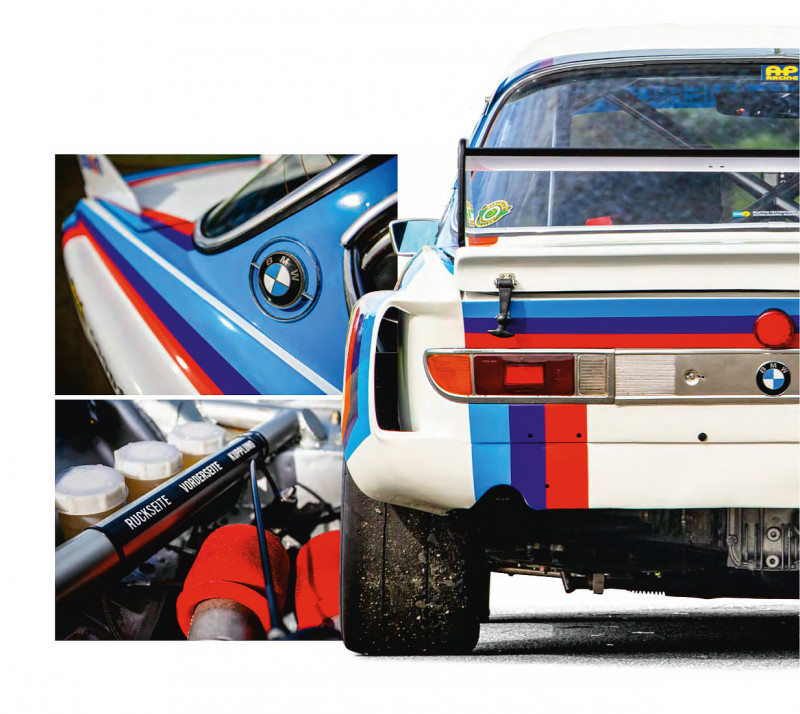
The front suspension now features custom rose-jointed lower arms and McPherson uprights with E46 BMW M3 hubs at the business end. Going fast is one thing, but pulling The Batmobile up is another. Jonathan opted to put his trust in AP Racing 362/32mm discs with six-pot callipers up front, with 232/25mm discs activated by two-pot braking in the rear. The finishing touch for the car was the BBS-style wheels by New Zealand’s own 41 Degree Wheels, based in Taupō. The 17x8-inch fronts and 17x10-inch rears wrapped in Hankook 235/17 and 275/17 rubber finished off the set-up.
BACK TO THE SHED
Jonathan had kept ticking things off during the two years of his ownership before a scheduled and well-deserved run at Skope in 2017. The car was going well, confidence was good, and a happy weekend of all things classic motor sport was in prospect. Lady Luck, however, had other ideas: fuel-pressure problems and a roguebolt through the rear tyre sent the car backwards off the track, damaging two wheels. Unfortunately the burst tyre smashed into the boot, ripping a hole in the floor. Once again Jonathan had to pull the car from the track and do yet more serious work on it. He recalls thinking the saying ‘to make a small fortune in motor racing, first you need to start with a large fortune’ was very much holding water.

Any automotive build will have its highs and lows, and Jonathan admits that at times he just wanted to put the car in the shed and shut the door for good. He pays tribute to his wife, Jill, who at those times gave him the emotional support that he needed to push through and get the difficult things done that would get the car completed. To sort out the boot he went to Tim Lloyd at Octane Automotive.
Work began putting a new floor into the boot, as well as the cockpit. They also agreed on a new roll cage after finding rust in the existing one. Tim is something of a perfectionist but he and Jonathan share the view that if something is worth doing, it is worth doing it right. The new cage would have the latest design elements that add to safety but retain the classic lines required to ensure that it looked just right once installed. A dose of chassis strengthening was also added to the to-do list due to the car being pillarless and quite soft. That this was required was demonstrated when the tweaking resulted in a cracked windscreen. Tim then set about making sure Jonathan wouldn’t need to seek out replacement glass every time the BMW was wrestled around the tarmac.
“I remember going into Octane to see the car with the new fabrication work done on it, and I was very surprised just how good it looked,” Jonathan recalls. All that was left to do before putting the car back together was to hit the interior with a fresh coat of paint, which came courtesy of Spraytec. With a solid engine and box, and stiffer chassis, the car proved very driveable and Jonathan was really starting to enjoy his time out on track.
THE WERKS
Jonathan had imported the bodykit it wears today from Ireland Engineering Motorsports in the US and, after sorting the mechanical side, he was waiting for an excuse to fit it. “I always thought at some stage I would end up in the tyre wall or someone would give me a good smack so I would then have to fit the bodykit,” says Jonathan.
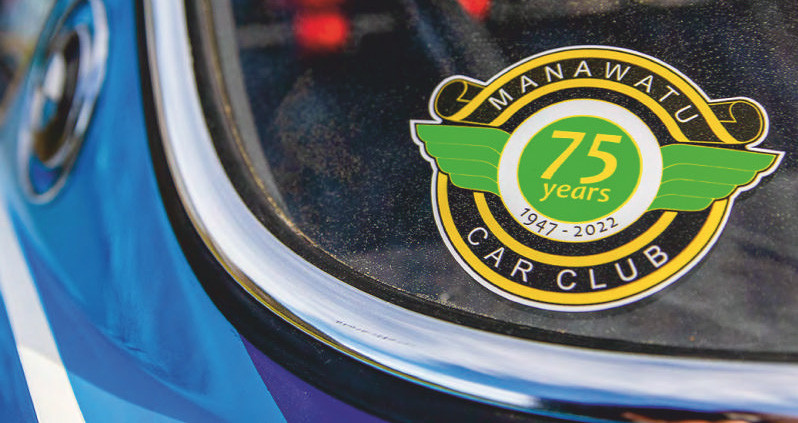
A period of ill-health, which led to the car being parked up, also gave time for Jonathan to decide the bodywork should match the quality underneath the skin. The kit was fitted. The livery chosen was that of the winning IMSA Camel GT Challenge Series cars that won the 24 Hours of Daytona round in 1976. As the twin-cam 3.5-litre motors were used right at the end of the CSL’s racing life racing in the States, it was fitting that this scheme should be the one.
Dittmer Collision Repair in Palmerston North was entrusted with fitting the new bodykit onto the car, and carried out the indicator delete needed to accord with how the cars ran 1976. All that was then required was the clean white paint, and the addition of the iconic tri-colour ribbons that do such a magnificent job of accentuating the Beemer’s classic coup. lines. One of the most iconic shapes, sounds, and sights of 1976 motor sport was now back on track. It was the culmination of nine years of hard work but the finished product has proved nothing short of stunning.

All that Jonathan needs to do now is take it to the different tracks around the country and enjoy it, giving much joy to many others in the process — the car garners plenty of attention wherever it goes.
“I remember when I did the clutch in at Hampton Downs — after arriving back at the pits three people came up to ask if I would have it running for the next day’s racing. They weren’t going to come back the next day unless the car was going to be fixed and out on track!” laughs Jonathan.
TIME MACHINE
Jonathan acknowledges that after all the work put into making the car sweet, safer, and more reliable, this CSL is more of a tribute car than a replica but making the car useable was always more of a priority: “If it was a replica then it would need plastic windows with braces and so on — and the word ‘replica’ also invites people to start looking more closely.”
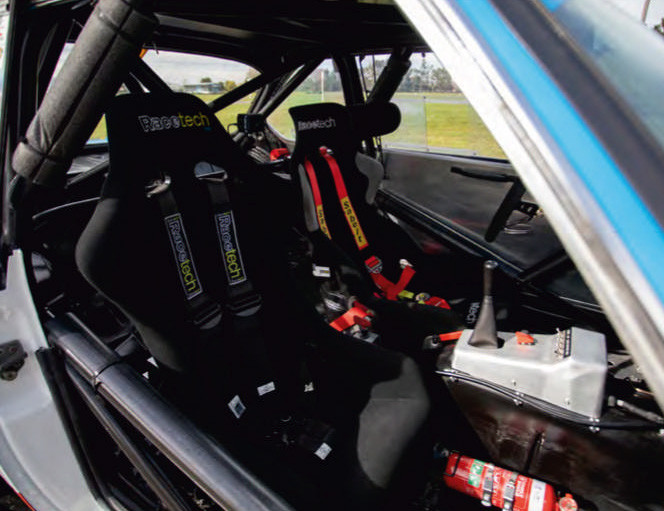
Nevertheless, the overwhelming interest in the car shows that Jonathan’s approach is very much justified. His great eye for detail and the attention to presentation that he and all those who have contributed to the car, have resulted in an allround superb recreation of an icon, a tribute car that gives Kiwi motor sport fans a little taste of the outrageous world of Group 5 that captivated Jonathan all those years ago.
So what is the best part of owning and driving a car like this? “The intake sound at 6000rpm is pretty cool; it has that six-cylinder noise at revs and a big intake noise everyone knows BMW does so well,” says Jonathan.
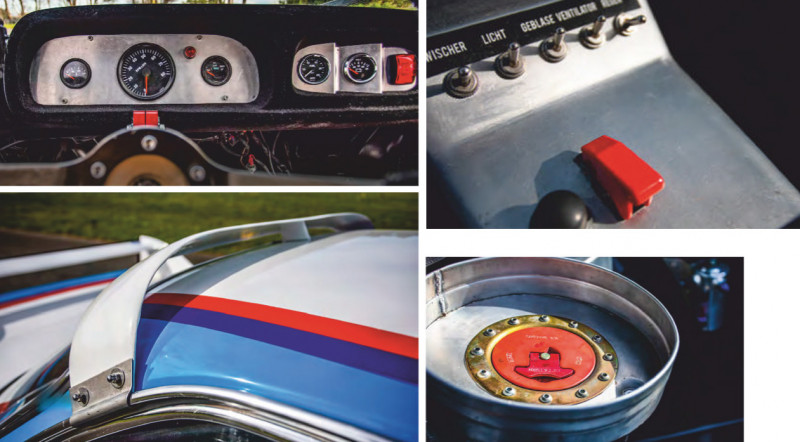
The exuberance and sheer excess of standard silhouettes taken to extremes and the huge variety of engine configurations and exhaust notes in Group 5 might have disappeared into motor sport history, but thanks to cars like this, and owners like Jonathan, we get to close our eyes and be transported back in time and half a world away — to be standing trackside at the Nürburgring. Wunderbar!
Additional downforce Quick access for fuel filling Basic but functional gauge layout.
The all-important rear wing, vital for providing rear downforce
Plenty of fuel on demand with 40-litre aluminium fuel tank and twin Bosch pumps.The Beemer in full flight.
It was time to get the car back out on track, although it took four attempts to keep it quiet enough to work within the track noise limits
The distinctive M-Power logo synonymous with high performance
The perfect racing stance
It wasn’t quite the turnkey deal that he had been hoping for — but who doesn’t love a good project? IMSA Camel GT Challenge Series livery
TECHNICAL DATA 1971 BMW 3.0 CSL E9 (1976 Daytona winner CSL Tribute Car)
- Engine M88/3, stock internals except twin timing-chain conversion and high-volume oil pump, stock head, Shrick fast-road camshafts
- Max. power 290bhp / 216.26kW at the wheels
- Max. torque 250lb ft / 339Nm
- Tuner Chris Wall at Prestige Tuning
- Intake system Factory individual throttle bodies and sock filters
- Exhaust system Manufactured by Llama Engineering, custom headers, 2.5-inch twin-system side-exit twin mufflers
- Fuel system Custom 40-litre aluminium fuel tank, twin Bosch pumps and surge tank, internal braided fuel lines, electronic fuel-pressure gauge and regulator, stock injectors
- Ignition system Stock BMW distributor and coil
- Engine management Link FuryX
- Cooling Custom radiator, oil cooler, power-steering cooler
- Transmission Getrag 256/5 dogleg gearbox
- Clutch 7¼-inch Quarter Master twin-plate
- Differential BMW E28 KBM
- Suspension, F/R XYZ QA1 shock absorbers with 500-pound springs, custom rosejointed lower arms, MacPherson strut uprights, E46 BMW M3 hubs / QA1 shock absorbers with 330-pound springs
- Brakes, F/R 362/32mm AP Racing disc, six-pot AP Racing callipers / 232/25mm AP
- Racing disc, two-pot AP Racing callipers
- Wheels, F/R 41 Degree Wheels 17x8-inch BBS-style / 41 Degree Wheels 17x10-inch BBS-style
- Body repairs and roll cage Octane Automotive
- Panel mods and paint Dittmer Collision Repair Bodykit Ireland Engineering Motorsports
- Graphics Sign Fusion
- Seats Racetech RT4009WHR driver, Racetech RT1000 passenger
- Gauges/Meters Smiths analogue
Impressive engine bay boasting factory individual throttle bodies and sock filters
Menacing view from the rear vision mirror.
Period-correct interior layout.
BBS-style wheels add the perfect finishing


